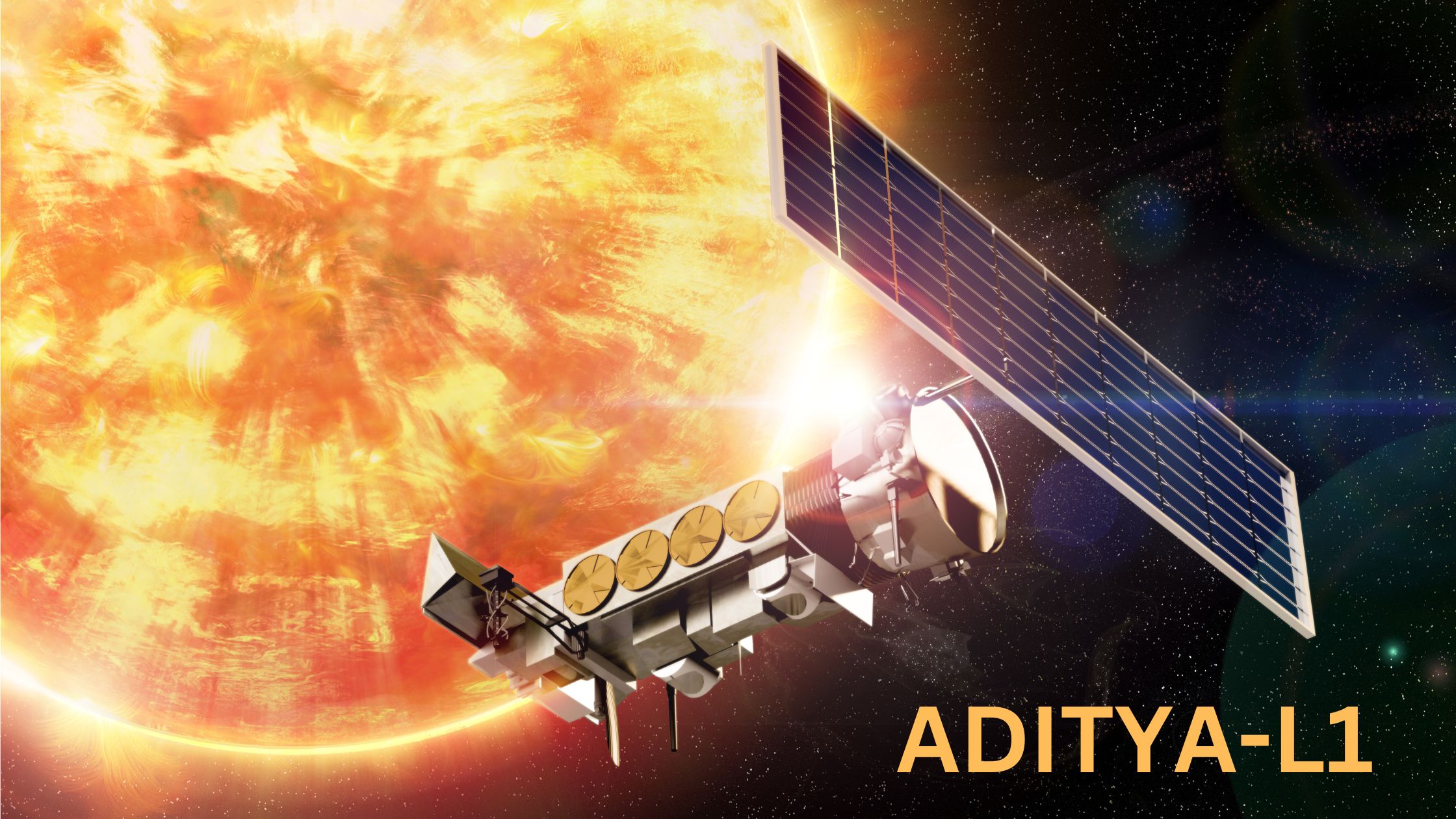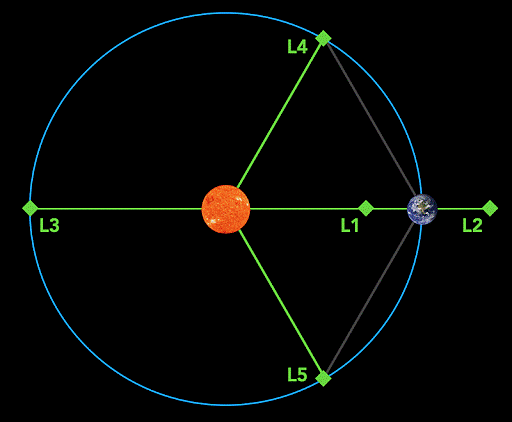WE HAVE NOW ADITYA- L1 TO KEEP AN EYE ON OUR SUN

It was a moment of pride when India announced to the world that our Aditya-L1 solar observatory reached its destination. Aditya L1 is the first spacecraft launched for studying the solar atmosphere , designed and developed by the Indian Space Research Organisation Aditya stands for Sun and L1 for Lagrange point. It reached the L1 point on January 6, 2024.
Chandrayaan 3 was launched at a distance of 3.83 lakhs KM from Earth which took around 40 days while Aditya L1 was launched at a distance of 15 lakhs KM from Earth which took around 127 days to reach L1.
It aims to provide information that helps us learn various facets of the sun and its atmosphere. In this blog, we’ll explore and learn more about Aditya- L1.
The WHY behind Aditya -L1
Aditya-L1, with its advantageous position outside the Earth’s atmosphere, can observe UV radiations from the corona. Thus, it helps us understand corona’s workings.Thus, it helps to understand the reason for the high temperature of the Sun’s corona (around 10 Lakhs degree)compared to the temperature on the surface of the Sun (around 5,500 degrees Celsius). This phenomenon is called Corona Heating Problem.
It also provides early warnings of solar eruptions, allowing us to take proactive measures to reduce the potential disruptions of these phenomena. Hence, to track the eruptions of the sun, it is significant to monitor the solar atmosphere and the corona continuously.

What is so special about the Lagrangian point- L1
L1 is the point where the gravitational forces of the Earth and the sun balance or almost cancel out. This stability allows satellites and spacecraft to stay stationary relative to the sun and Earth. Therefore, they do not require much fuel. This fuel efficiency is one of the various benefits this spot offers. Moreover, this location which is 1.5 million km away from Earth towards the sun is the perfect place to look at the sun without any interruptions.
Objectives of Aditya-L1 missionx
Explore and study the chromosphere and corona, the upper atmospheric layers of the Sun. The corona is the outermost layer and the chromosphere is the layer just below the corona.
To seek the answer to the elusive Corona Heating Problem. The sun’s corona has extreme temperatures compared to the temperature on the surface of the sun.
Examine the Coronal Mass Ejections (CME), which involve large expulsions of plasma and magnetic fields from the sun’s corona.
Unravel the reasons behind the acceleration of particles on the Sun, which leads to the solar wind.
The uniqueness of Aditya-L1The mission captures the solar disc in the near ultraviolet range.
Aditya- L1 examines CME dynamics close to the solar disk. Hence, it will give insights into the CME’s inconsistently observed acceleration regime.
Aditya-L1 observes the solar wind from multiple directions. Thus, we can figure out the direction and energy of the solar wind.
The 7 payloads and their functions
The payloads provide essential data surrounding various phenomena such as coronal heating, coronal mass ejection, and flare activities. Similarly, they will unravel the dynamics behind the space weather. Let’s glance over the seven payloads one by one.
1. Visible Emission Line Coronagraph(VELC)The VELC with its corona imaging and spectroscopy capabilities will capture the emissions from the sun’s corona. Thus it enables the study of the coroner's structure and dynamics to get insights into its heating mechanisms.
2. Solar Ultraviolet Imaging Telescope (SUIT)SUIT’s duty is to image the chromosphere and photosphere. It will provide details about these layers’ heating mechanisms as well as the origin of solar winds.
3. Solar Low Energy X-ray Spectrometer ( SoLEXS)This payload plays an important role in measuring the spectrum of solar X-ray emissions Thus, it will contribute to the study of solar flares and coronal mass ejections.
4. High Energy Orbiting X-ray Spectrometer(HEL1OS)This payload measures the solar X-ray spectrum in a high-energy range. It will enable the study of coronal mass ejections and solar flares.
5. Aditya Solar Wind Particle Experiment( ASPEX)It analyzes the particles in the solar wind and gives insights into their impact on the Earth’s atmosphere and environment.
6. Plasma Analyser for Aditya (PAPA)This payload examines various properties of the solar wind plasma and provides information on the interaction between the Earth’s atmosphere and the solar wind.
7. Advanced Tri-axial High-Resolution Digital MagnetometersThis payload has a crucial role in studying the sun’s magnetic field. It measures the magnetic field components namely Bx, By, and Bz. This helps to understand solar magnetic activity and its effect on space weather.
Conclusion
The Aditya -L1 mission holds immense potential to deepen our understanding of the Sun’s behavior and its mysterious influence on the Earth. Besides the promising scientific information, this pioneering leap is a great confidence booster for future space expeditions.
Input credits by Dr. Nishanth N
Dept. of ECE, TKMCE
Curated by Team Advantage
.png)